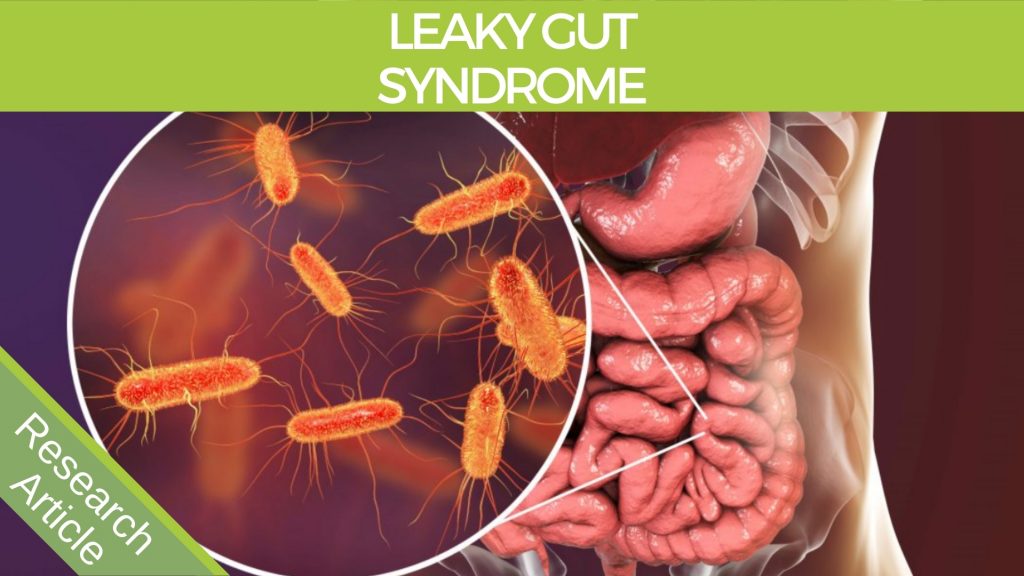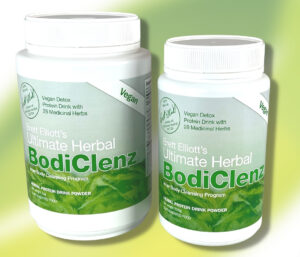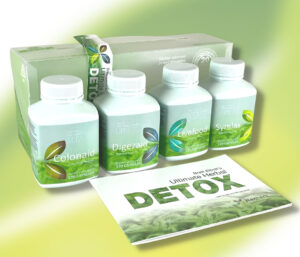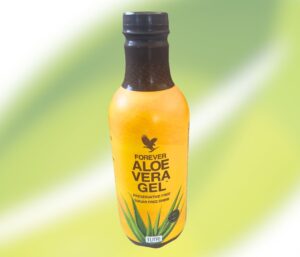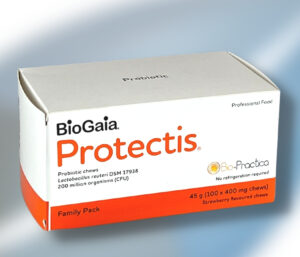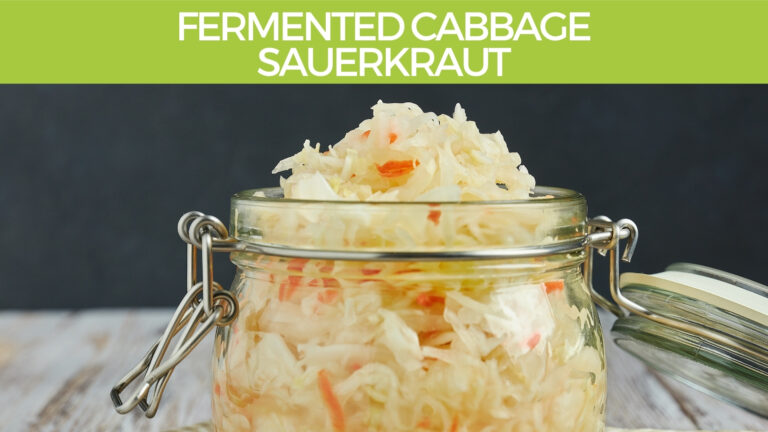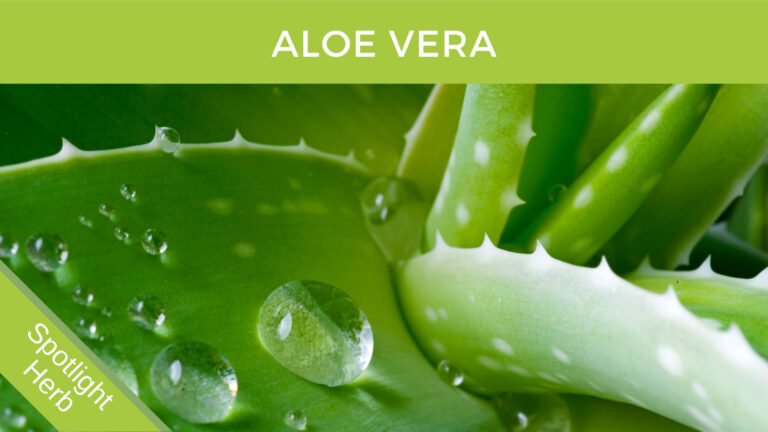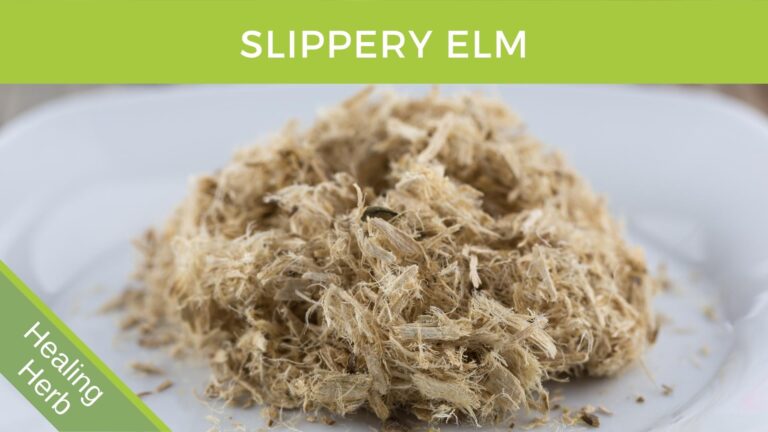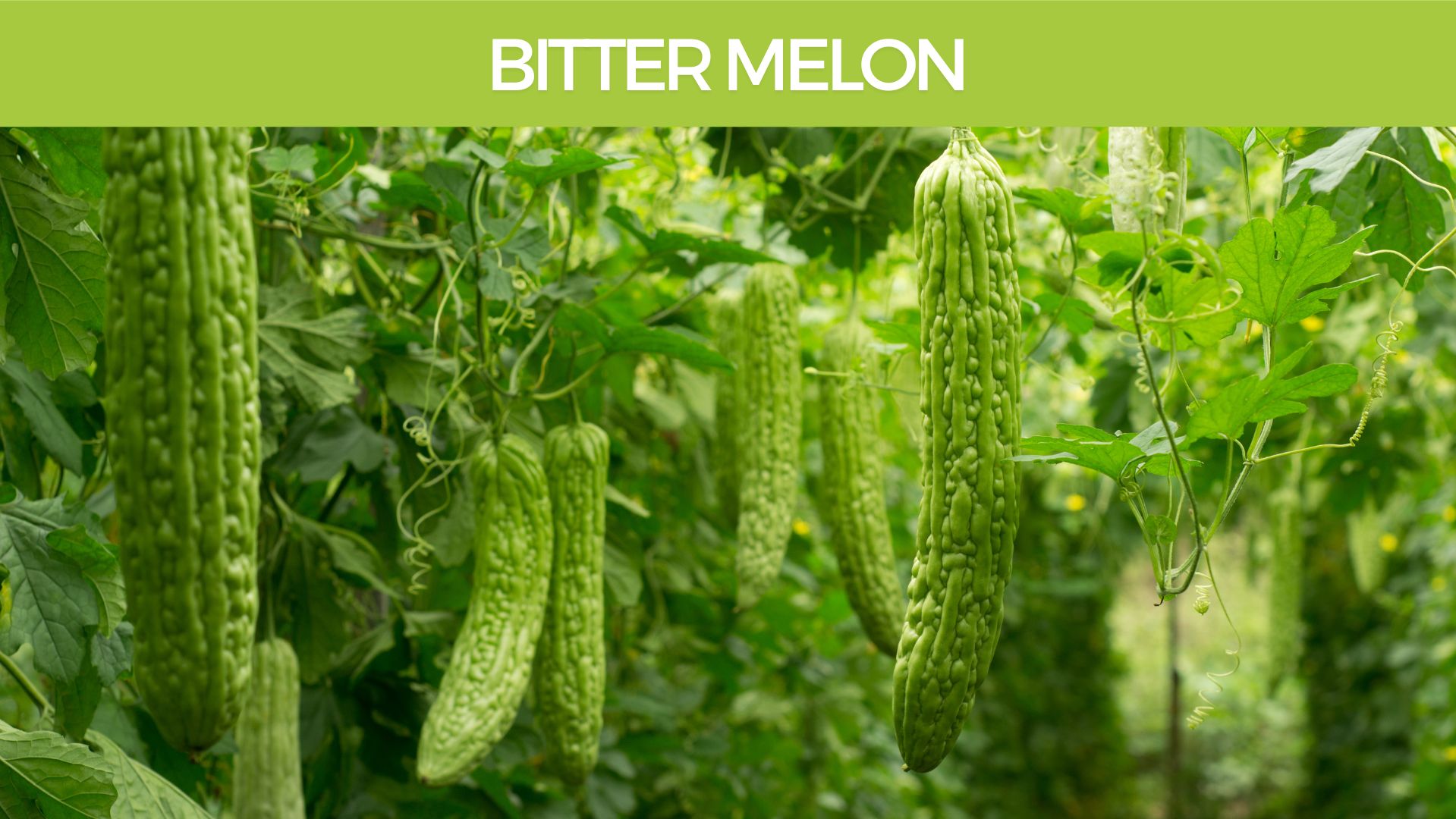- 4 hours ago
- 20Minutes
- 5682Words
- 824Views
You may have heard the term ‘leaky gut’ talked about in recent times. It has become more of a common occurrence and is now widely accepted as a cause of both inflammation and autoimmune disturbances.
(1) Leaky Gut As a Danger Signal for Autoimmune Diseases. Pubmed https://www.ncbi.nlm.nih.gov/pmc/articles/PMC5440529/
(2) Immunoglobulin A (IgA). Britich Society for Immunology. https://www.immunology.org/public-information/bitesized-immunology/receptors-and-molecules/immunoglobulin-iga
(3) Alterations in Intestinal Permeability: The Role of the “Leaky Gut” in Health and Disease. PUBMED https://www.ncbi.nlm.nih.gov/pmc/articles/PMC6467570/
(4) Intestinal Barrier Function: Molecular Regulation and Disease Pathogenesis. PUBMED https://www.ncbi.nlm.nih.gov/pmc/articles/PMC4266989/
(5) Gastrointestinal Candida colonisation promotes sensitisation against food antigens by affecting the mucosal barrier in mice. PUBMED https://www.ncbi.nlm.nih.gov/pmc/articles/PMC1856330/
(6) Alterations in intestinal permeability. PUBMED https://www.ncbi.nlm.nih.gov/pmc/articles/PMC1856434/
(7) Intestinal permeability – a new target for disease prevention and therapy. PUBMED https://www.ncbi.nlm.nih.gov/pmc/articles/PMC4253991/
(8) Dietary fructose and intestinal barrier: potential risk factor in the pathogenesis of nonalcoholic fatty liver disease. PUBMED https://www.ncbi.nlm.nih.gov/pubmed/19679262/
(9) Comparison with ancestral diets suggests dense acellular carbohydrates promote an inflammatory microbiota, and may be the primary dietary cause of leptin resistance and obesity. PUBMED https://www.ncbi.nlm.nih.gov/pmc/articles/PMC3402009/
(10) The efficacy of probiotics in the treatment of irritable bowel syndrome: a systematic review. https://gut.bmj.com/content/59/3/325.short
(11) A systematic review and meta-analysis: probiotics in the treatment of irritable bowel syndrome. PUBMED https://www.ncbi.nlm.nih.gov/pubmed/19220890
(12) Systematic review: probiotics in the management of lower gastrointestinal symptoms in clinical practice — an evidence-based international guide. PUBMED https://www.ncbi.nlm.nih.gov/pubmed/23981066/
(13) Effect of probiotics on gastrointestinal symptoms and small intestinal permeability in children with atopic dermatitis. PUBMED https://www.ncbi.nlm.nih.gov/pubmed/15520759
(14) Probiotic supplementation affects markers of intestinal barrier, oxidation, and inflammation in trained men; a randomized, double-blinded, placebo-controlled trial. PUBMED https://www.ncbi.nlm.nih.gov/pubmed/22992437/
(15) Systematic review: probiotics in the management of lower gastrointestinal symptoms in clinical practice — an evidence-based international guide. PUBMED https://www.ncbi.nlm.nih.gov/pubmed/23981066/
(16) Composition and metabolism of the intestinal microbiota in consumers and non-consumers of yogurt. PUBMED https://www.ncbi.nlm.nih.gov/pubmed/17217568
(17) Contrasting effects of fresh and fermented kimchi consumption on gut microbiota composition and gene expression related to metabolic syndrome in obese Korean women. PUBMED https://www.ncbi.nlm.nih.gov/pubmed/25688926
(18) Intestinal permeability – a new target for disease prevention and therapy. PUBMED https://www.ncbi.nlm.nih.gov/pmc/articles/PMC4253991/
(19) Impact of increasing fruit and vegetables and flavonoid intake on the human gut microbiota. PUBMED https://www.ncbi.nlm.nih.gov/pubmed/26757793
(20) Prebiotic fiber modulation of the gut microbiota improves risk factors for obesity and the metabolic syndrome. PUBMED https://www.ncbi.nlm.nih.gov/pubmed/22555633
(21) Intestinal Barrier Function: Molecular Regulation and Disease Pathogenesis. PUBMED https://www.ncbi.nlm.nih.gov/pmc/articles/PMC4266989/
(22) Intestinal permeability, leaky gut, and intestinal disorders. PUBMED https://www.ncbi.nlm.nih.gov/pubmed/10980980
(23) Intestinal permeability in the pathogenesis of NSAID-induced enteropathy. PUBMED https://www.ncbi.nlm.nih.gov/pubmed/19148789
(24) The Leaky Gut and Altered Microbiome in Chronic Kidney Disease. PUBMED https://www.ncbi.nlm.nih.gov/pubmed/29056165
(25) Berberine improves intestinal epithelial tight junctions by upregulating A20 expression in IBS-D mice. PUBMED https://www.ncbi.nlm.nih.gov/pubmed/31306972
(26) Berberine alleviates dextran sodium sulfate-induced colitis by improving intestinal barrier function and reducing inflammation and oxidative stress. PUBMED https://www.ncbi.nlm.nih.gov/pmc/articles/PMC5450762/
(27) Remodeling of Tight Junctions and Enhancement of Barrier Integrity of the CACO-2 Intestinal Epithelial Cell Layer by Micronutrients. PUBMED https://www.ncbi.nlm.nih.gov/pmc/articles/PMC4520484/
(28) Aloe Vera for Tissue Engineering Applications. PUBMED https://www.ncbi.nlm.nih.gov/pmc/articles/PMC5371879/
(29) Advances in treatment of ulcerative colitis with herbs: From bench to bedside. PUBMED https://www.ncbi.nlm.nih.gov/pmc/articles/PMC4202341/
(30) Botanical Drugs as an Emerging Strategy in Inflammatory Bowel Disease: A Review. PUBMED https://www.ncbi.nlm.nih.gov/pmc/articles/PMC4630406/
(31) Prebiotic Potential of Herbal Medicines Used in Digestive Health and Disease. PUBMED https://www.ncbi.nlm.nih.gov/pmc/articles/PMC6065514/
(32) Mucosal Barrier in Ulcerative Colitis and Crohn’s Disease. PUBMED https://www.ncbi.nlm.nih.gov/pmc/articles/PMC3664489/
(33) Engineering the Mucus Barrier. PUBMED https://www.ncbi.nlm.nih.gov/pmc/articles/PMC6463277/
(34) Intestinal epithelial cells in inflammatory bowel diseases. PUBMED https://www.ncbi.nlm.nih.gov/pmc/articles/PMC2937106/
(35) Gluten-Free Products for Celiac Susceptible People. PUBMED https://www.ncbi.nlm.nih.gov/pmc/articles/PMC6304385/
(36) Dietary fiber and prebiotics and the gastrointestinal microbiota. PUBMED https://www.ncbi.nlm.nih.gov/pmc/articles/PMC5390821/
(37) Long-Term Dietary Intake of Chia Seed Is Associated with Increased Bone Mineral Content and Improved Hepatic and Intestinal Morphology in Sprague-Dawley Rats. PUBMED https://www.ncbi.nlm.nih.gov/pmc/articles/PMC6073254/
(38) High dose probiotic and prebiotic cotherapy for remission induction of active Crohn’s disease. PUBMED https://www.ncbi.nlm.nih.gov/pmc/articles/PMC3725482/#B191-nutrients-05-01869
Leaky gut syndrome may in fact contribute to, and exacerbate multiple diseases, including autoimmune diseases such as inflammatory bowel disease, celiac disease, autoimmune hepatitis, type 1 diabetes, multiple sclerosis, and lupus
Leaky gut syndrome may in fact contribute to, and exacerbate multiple diseases, including autoimmune diseases such as inflammatory bowel disease, celiac disease, autoimmune hepatitis, type 1 diabetes, multiple sclerosis, and lupus.
Leaky Gut Syndrome Explained and Resolved
Leaky gut syndrome is often overlooked as it’s a little complex to understand and it doesn’t present itself as a clinically significant and recognised condition when visiting your doctor.
I will simplfy the process into these parts:
- The anatomy of Leaky Gut Syndrome
- What Causes Leaky Gut Syndrome?
- Symptoms of Leaky Gut Syndrome
- Potential causes of Leaky Gut Syndrome
- IBS links to Leaky Gut Syndrome
- Foods and Leaky Gut Syndrome
- A herbal program for Leaky Gut Syndrome
Click The Links Above To Skip Sections
What Is Leaky Gut Syndrome?
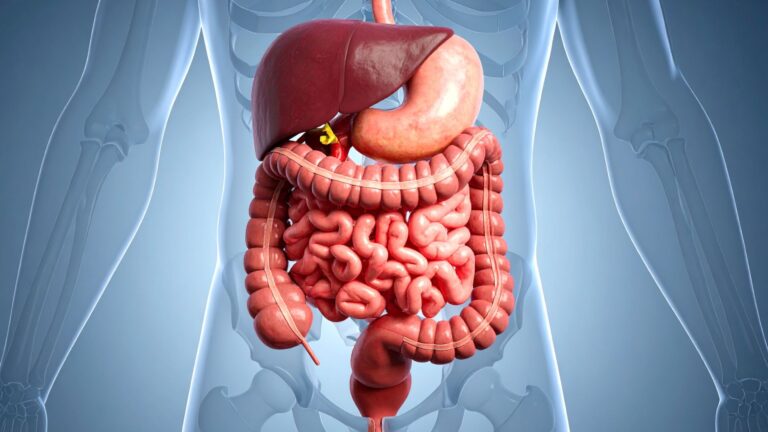
Role of the digestive tract:
- Breaks down food and absorbs nutrients.
- The intestinal wall acts as a barrier, deciding what enters the bloodstream.
The intestinal lining:
- Allow water and nutrients to pass through.
- Block harmful substances from entering circulation.
- Intestinal permeability refers to how easily substances pass through this wall.
The mucosal barrier:
- The intestinal epithelial lining (gut membrane) plus secreted factors form a protective mucosal barrier.
- This barrier separates the body from the outside environment.
- When permeability is compromised, toxins, bacteria, and antigens can enter the bloodstream, creating a “leaky gut.” (1)
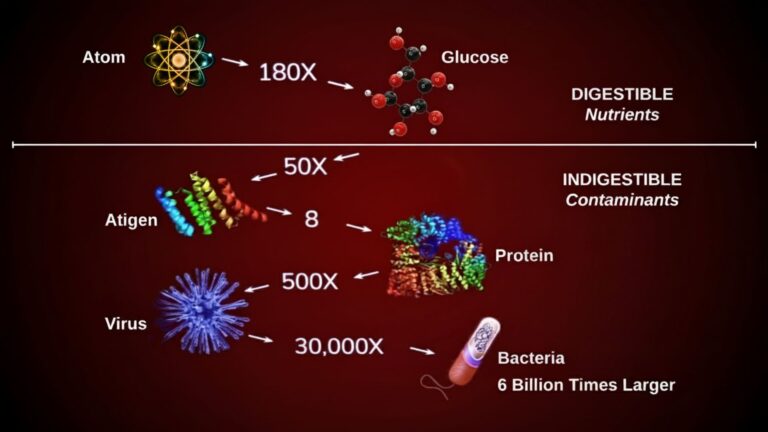
Challenges faced by the gut lining:
Constantly exposed to foreign antigens such as:
- Food particles- Must be properly digested into single molecules
- Commensal (friendly) bacteria.
- Harmful pathogens.
- Environmental toxins.
A specialized barrier function is required to block harmful substances while still absorbing nutrients.
How the barrier works:
The first line of defense is just one layer of epithelial cells, linked tightly by junction proteins.
Other supportive factors include:
- Mucins (protective mucus).
- Antimicrobial molecules.
- Immunoglobulins (antibodies).
- Cytokines (immune messengers).
When things go wrong:
Abnormalities in these protective factors weaken the barrier.
This leads to increased intestinal permeability — the hallmark of Leaky Gut Syndrome. (1)
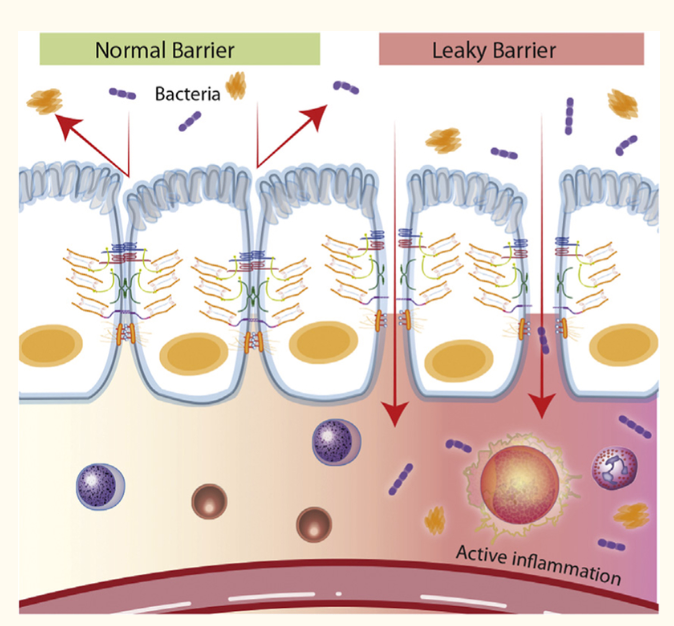
What Happens In Leaky Gut Syndrome - Symptoms
Loose tight junctions:
- When the tight junctions in the intestinal wall loosen, the gut becomes more permeable.
- This allows bacteria and toxins to leak into the bloodstream.
- This increased intesinal permeability is commonly called “leaky gut.”
Consequences of a leaky gut:
Entry of toxins and microbes into circulation can:
- Trigger widespread inflammation.
- Stimulate an immune system reaction.
- May contribute to both digestive and whole-body symptoms.
Possible symptoms linked to leaky gut:
- Auto-immune disorders
- Bloating & Gas
- Constipation
- Food cravings
- Food sensitivities
- Physical Fatigue and low energy
- Mental Fatigue and low energy (Leaky brain)
- Generalised Inflammation (Excema, arthritis)
- Inflammatory Bowel Disease (Crohn’s, IBS)
- Digestive issues (irregularity, discomfort)
- SIBO (small intestinal bacterial overgrowth)
- Skin problems (such as rashes or breakouts)
Medical perspective:
Leaky gut syndrome is not yet an officially recognized medical diagnosis.
Some medical professionals even deny its existence. (6)
However, growing research continues to explore the connection between intestinal permeability and chronic inflammation.
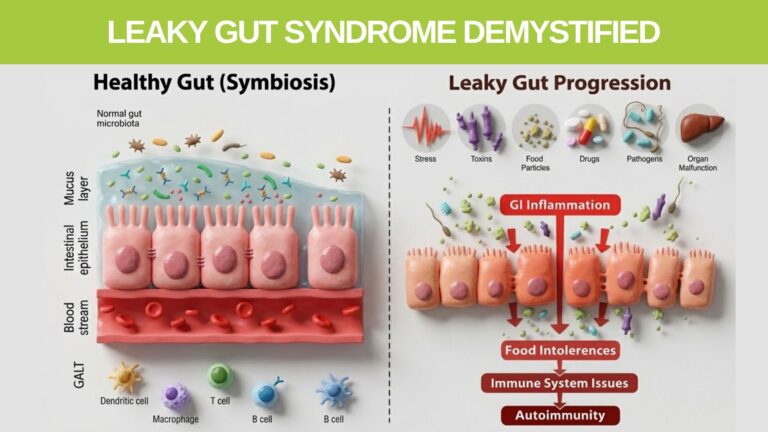
What Causes Leaky Gut Syndrome?
Factors that increase gut permeability:
- Diet-derived compounds (processed foods, additives, unhealthy fats).
- Food allergies or intolerances
- Alcohol consumption.
- Gut microbiota dysbiosis (imbalance of beneficial vs. harmful bacteria). 40 Trillion Bacteria
- Research suggests the gut microbiome plays a key role in regulating both intestinal permeability and barrier strength. (1)
Foreign substances that challenge the gut:
The digestive tract is exposed to:
- Microorganisms (bacteria, viruses, fungi).
- Environmental toxins.
- Food-derived antigens.
Without a strong barrier, these can:
- Penetrate tissues beneath the gut lining.
- Enter the bloodstream and lymphatic system.
- Disrupt immune and tissue balance.
The intestinal barrier system:
Normally, the gut is protected by a multifaceted barrier that includes:
- Physical components (epithelial cells and tight junctions).
- Biochemical defenses (mucus, antimicrobial peptides).
- Immunological defenses (antibodies, cytokines, immune cells).
These work together to block pathogens while allowing nutrient absorption. (1)
Understanding the root cause:
To understand what causes leaky gut syndrome, we first need to look at the key components of the intestinal barrier and how they function.
Understanding Leaky Gut Syndrome
There are several layers making up the intestinal musocal barrier, so let’s break these layers down a little to clearly understand how leaky gut comes about.
The Physical Gut Barrier
In humans, the intestinal epithelium covers a surface area as large as 400 m2. It can broken down as follows.
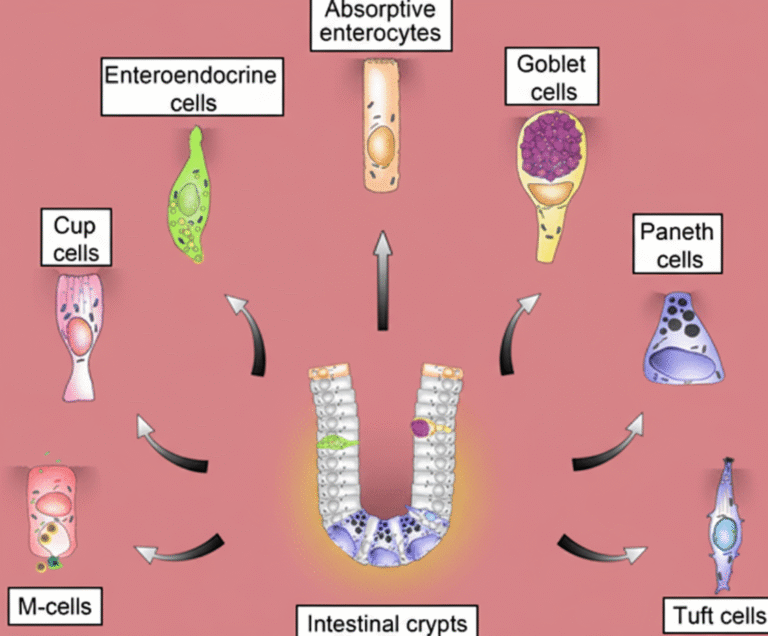
Intestinal Cells and the Gut Barrier
The intestinal epithelial cells (IECs):
- Form a single-cell layer that acts as the main physical barrier of the gut.
- Despite being just one layer, they are central to protecting the body from toxins, microbes, and antigens.
Types of intestinal epithelial cells:
At least seven functional types have been identified:
- Enterocytes – account for ~90% of IECs; responsible for nutrient absorption.
- Goblet cells – secrete mucin (protective mucus).
- Paneth cells – release antimicrobial peptides.
- Microfold (M) cells – help transport antigens to immune cells.
- Enteroendocrine cells – secrete hormones regulating digestion and appetite.
- Cup cells – function not yet fully understood.
- Tuft cells – function not yet fully understood. (1)
- Cell renewal and stem cells:
All IECs originate from intestinal epithelial stem cells.
The gut lining has a fast turnover rate, with renewal every 3–5 days.
Specialized secretory IECs:
- Enteroendocrine cells – maintain gut communication and function through hormone secretion.
- Goblet cells – maintain the barrier with mucus production.
- Paneth cells – defend against pathogens with antimicrobial peptides. (3)
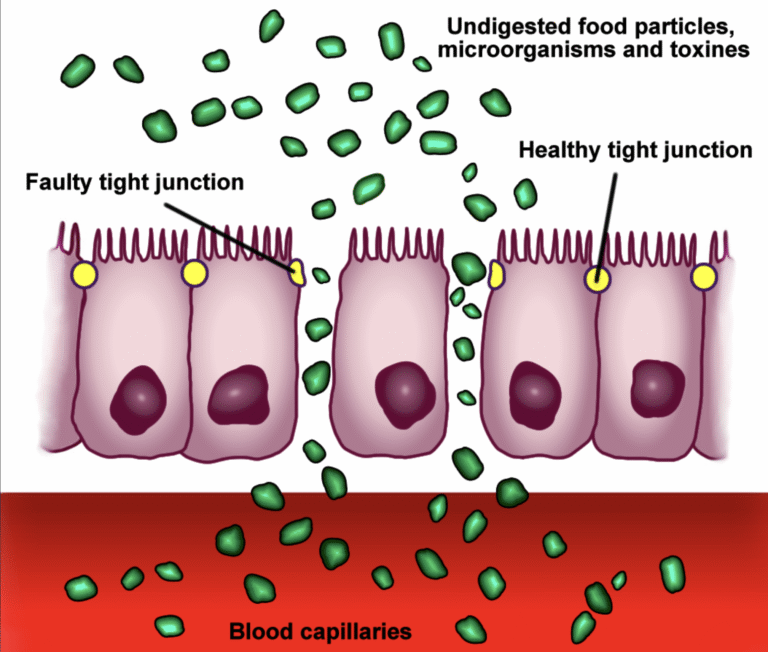
Tight Junction Proteins and Leaky Gut
The front line of the gut barrier:
- Made up of a single layer of epithelial cells.
- These cells are linked together by tight junction (TJ) proteins.
Tight junction proteins:
- Over 40 different proteins regulate the flexibility and integrity of tight junctions.
They form transmembrane links that:
- Connect epithelial cells to one another.
- Create a selective diffusion barrier, allowing nutrients to pass but blocking harmful substances.
When tight junctions are disrupted:
Harmful molecules and microbes from the intestinal lumen can slip through.
This leads to:
- Immune system activation.
- Inflammation in the gut wall.
- Potential progression to intestinal and systemic diseases. (3)
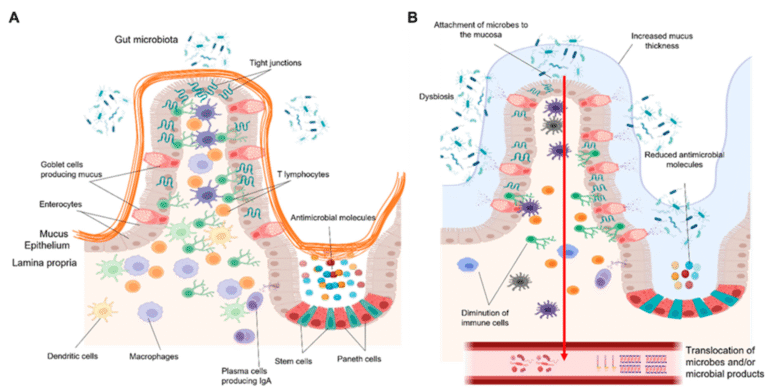
Mucus Layers and Gut Protection
Protective mucus barrier:
On top of the intestinal epithelium, there are two mucus layers:
- Inner layer – directly covers and protects epithelial cells.
- Outer layer – acts as an additional shield against microbes and toxins.
Together, they provide physical protection for the gut lining.
Goblet cells and mucus formation:
Goblet cells are the key cell type responsible for mucus production.
The mucus lining contains a variety of protective molecules, including:
- Immunoglobulin A (IgA).
- Enzymes and proteins, such as lactoferrin. (1)
Role of IgA:
Serves as the first line of defense against infections.
Functions include:
- Inhibiting bacterial and viral adhesion to intestinal cells.
- Neutralizing bacterial toxins and viruses, both inside and outside cells. (2)
Importance of mucus for gut health:
Animal studies show that mice lacking mucus production develop colitis spontaneously.
This demonstrates the critical role of mucosal protection in preventing inflammation and disease. (1)
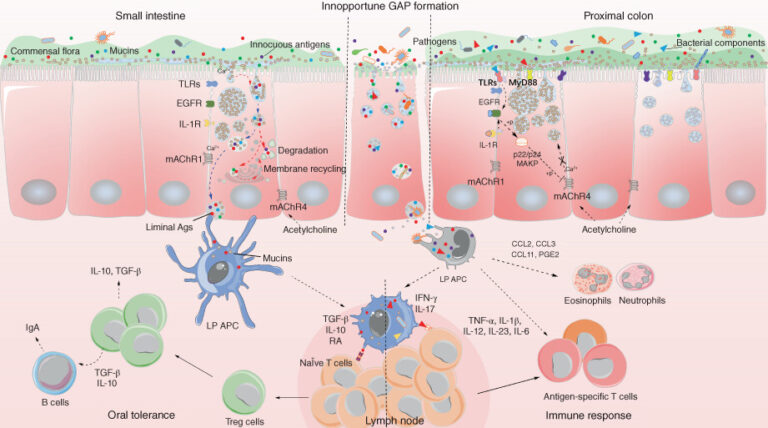
Gut Microbiota and the Intestinal Barrier
Two main roles of healthy gut bacteria are:
Defense against harmful microbes:
- Compete with pathogens for nutrients.
- Occupy attachment sites on the gut lining.
- Release antimicrobial substances to block invaders.
Support digestion and nutrient absorption:
- Regulate the breakdown of food.
- Provide energy to epithelial cells, which are central to the gut’s physical barrier.
Gut microbiota and barrier function:
- Certain bacteria, their products, and metabolites directly strengthen or weaken intestinal barrier function.
- Imbalance can lead to tissue breakdown and disruption of gut homeostasis.
Microbial translocation:
In leaky gut, commensal bacteria and their products escape the gut lumen.
Once in the bloodstream, they can:
- Trigger inflammation.
- Cause systemic tissue damage.
This phenomenon is called microbial translocation.
Gut microbiota and mucus production:
Healthy microbiota stimulate mucin secretion from goblet cells.
In animals with low bacterial populations:
- Mucus layers are thinner.
- Bacteria penetrate more easily, causing inflammation and diseases like colitis.
Balance is key:
- A healthy equilibrium between commensal bacteria and the mucus layers maintains gut homeostasis.
- Disruption of this balance can initiate inflammatory disease processes. (1)
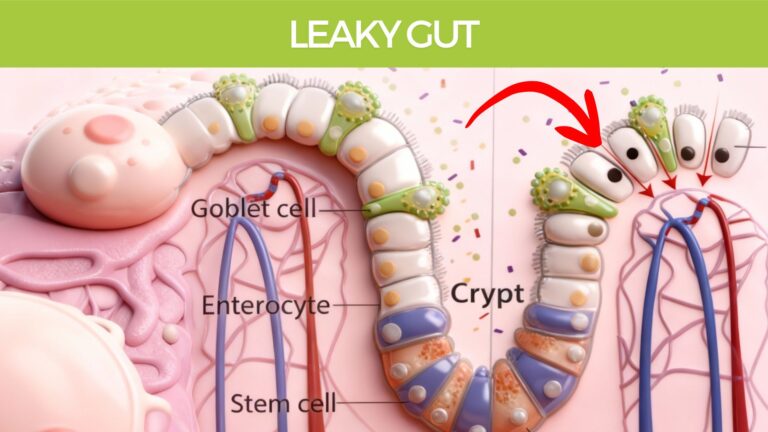
The Biochemical Gut Barrier
Biochemical molecules with antimicrobial properties exist in the mucus as well as far into the lumen and include bile acids and antimicrobial proteins. These diverse molecules form a complicated network to reduce the load of colonized bacteria and decrease the chance of contact between luminal antigens and host cells.
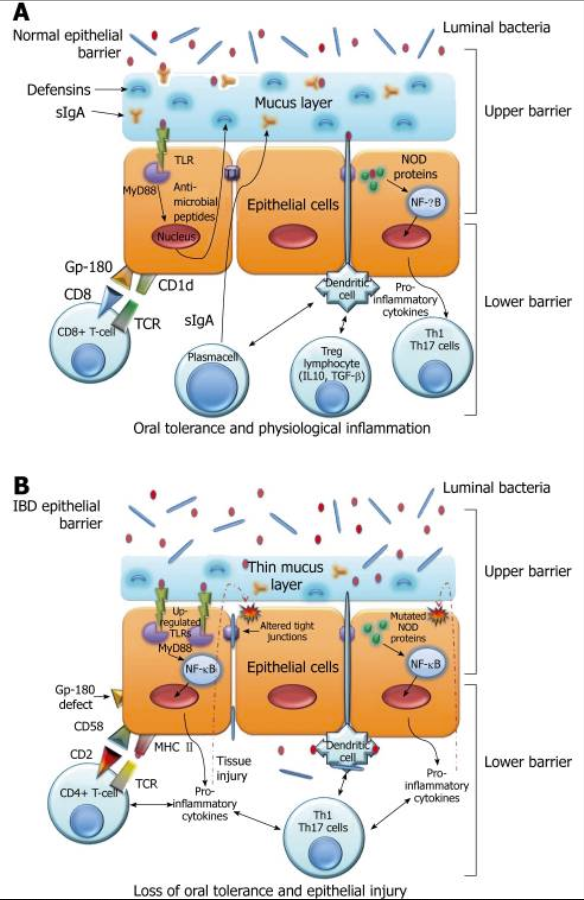
The Immunological Gut Barrier
Immune defenses below the gut lining:
Beneath the intestinal epithelium lies organized lymphatic tissue containing:
- B cells
- T cells
- Dendritic cells
- Neutrophils
These cells work together to orchestrate immune responses against invaders.
Goblet cells and pathogen sensing:
- Beyond producing mucus, goblet cells can detect invasive pathogens.
- They help block harmful bacteria from entering the host immune system.
Role of Immunoglobulin A (IgA):
- Secretory IgA is the most abundant antibody in the human body.
- Primarily found on intestinal mucosal surfaces.
- Functions as a front-line defense against pathogens by neutralizing bacteria and viruses before they can cause harm.
Autoimmunity and leaky gut connection:
- Autoimmune disorders occur when the body generates autoantibodies against its own tissues.
- This leads to chronic inflammation and tissue damage.
Contributing factors include:
- Genetic predisposition.
- Environmental triggers.
- Intestinal barrier dysfunction and microbial translocation (movement of microbes across a leaky gut).
- Recent evidence highlights the role of gut microbiota imbalances as a key factor in triggering autoimmunity. (1)
Causes of Leaky Gut Syndrome
A large variety of gut barrier disruptors and/or gut microbiota disturbers may potentially result in microbial translocation and subsequent inflammation locally and systemically. These include diet, infections, alcohol consumption, and burn injury.
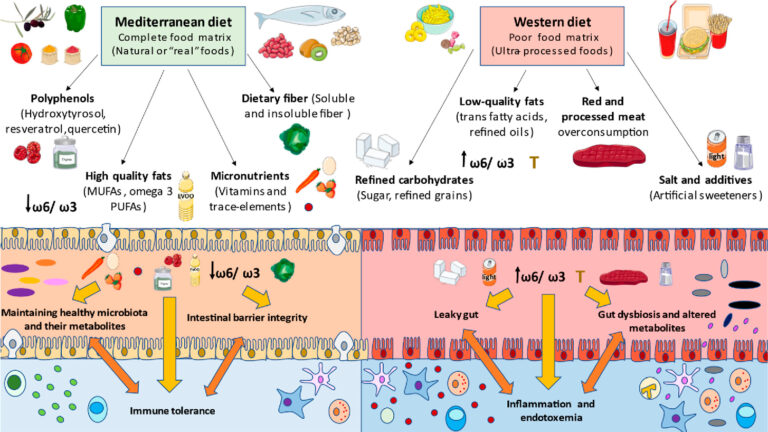
Diet and Leaky Gut Syndrome
Diet, Alcohol, and Gut Barrier Health
Diet and microbiota balance:
Nutrients and food compounds can strengthen or weaken the intestinal barrier.
Low-fiber diets:
- Trigger growth of mucus-degrading bacteria.
- Result in a thinner mucus layer.
- Compromise the barrier, making the gut more susceptible to colitis-causing pathogens.
High saturated fat diets:
- Reduce beneficial Lactobacillus.
- Increase Oscillibacter (associated with inflammation).
- Linked to higher intestinal permeability in the proximal colon. (1)
Alcohol and gut health:
Chronic alcohol consumption disrupts:
- The intestinal barrier.
- Both the quality and quantity of gut microbiota.
- Alcohol suppresses beneficial Lactobacillus populations.
- Leads to increased intestinal permeability, allowing endotoxins to move into the bloodstream. (1)
Systemic effects of alcohol:
- Endotoxin translocation triggers inflammation and tissue damage in distant organs.
- Acute alcohol use can increase permeability, even in healthy individuals.
- Active alcoholics have 5x higher plasma endotoxin levels than healthy controls. (4)
Chronic Kidney Disease, Acid Load and Leaky Gut
Impact on the gut:
- Chronic kidney disease (CKD) disrupts the intestinal epithelial barrier.
- Causes significant changes in the gut microbiota composition.
Key contributing factors:
- Heavy influx of circulating urea into the gut.
- Low intake of fruits and vegetables (alkaline foods).
- Low intake of symbiotic or probiotic foods such as yogurt. (24)
Consequences of gut disruption in CKD:
- Promotes systemic inflammation.
- Increases risk of cardiovascular morbidity.
Mechanisms include:
- Microbial dysbiosis (imbalance of gut bacteria).
- Breakdown of the intestinal barrier.
Translocation of harmful substances into the bloodstream, including:
- Endotoxins.
- Bacterial fragments.
- Uremic toxins.
Result:
These combined factors accelerate systemic inflammation and worsen health outcomes in CKD patients through a leaky gut mechanism.
Bacterial Infections and Leaky Gut Syndrome
Role of infections:
- Pathogens can directly disrupt the mucosal barrier and increase intestinal permeability.
- Examples of pathogens affecting gut barrier function:
Helicobacter pylori:
- A Gram-negative bacterium infecting the stomach.
- Known to increase epithelial permeability directly.
Salmonella:
- In rat studies, exposure caused disruption of intestinal barrier integrity. (1)
Cholera:
Alters gut barrier function by:
- Disrupting tight junctions (TJs).
- Dysregulating ion and fluid transport.
- Initiating inflammatory cascades. (4)
E. coli:
- A common diarrhea-causing bacterium.
- Disrupts tight junction proteins by adhering directly to epithelial cells. (4)
Clostridium perfringens:
- A major cause of food poisoning.
- Produces an enterotoxin that binds directly to tight junctions, using them as receptors. (4)
Candida (yeast overgrowth):
Mouse studies show gastrointestinal Candida colonization can:
- Increase sensitivity to food antigens.
- Involve mast-cell-mediated hyperpermeability of the gut lining. (5)
Stress and Leaky Gut Syndrome
The intestinal barrier is influenced by many forms of stress, including:
- Physiological stress (e.g., illness, exertion).
- Pharmacological stress (e.g., medications).
- Psychological stress (e.g., anxiety, emotional strain).
Other external stressors (environmental factors).
Exercise and gut permeability:
- Moderate to intense exercise has been shown to increase intestinal permeability.
- Blood flow is redirected away from the gut toward active muscles.
- Reduced blood supply causes intestinal tissue stress and sometimes damage to the gut lining.
This can lead to increased permeability.
Stress hormones and permeability:
- The effect is similar to the “fight-or-flight” response triggered by adrenal hormones such as cortisol.
- Appears to be intensity-dependent — the greater the stress, the more pronounced the barrier disruption. (3)
Pharmaceuticals and Leaky Gut Syndrome
NSAIDs and Gut Barrier Damage
GI side effects of NSAIDs:
- Non-steroidal anti-inflammatory drugs (NSAIDs) are widely used but linked to a high incidence of gastrointestinal side effects.
Chronic use is associated with:
- Intestinal barrier dysfunction.
- Ulcers.
- Perforation.
- Hemorrhage.
- Worsening of inflammatory bowel disease (IBD).
Mitochondrial effects:
- NSAIDs can uncouple mitochondrial oxidative phosphorylation.
- This impairs mitochondrial energy production, which is critical for maintaining tight junction integrity.
The result is:
- Weakened barrier function.
- Increased inflammation.
- Greater intestinal permeability. (4)
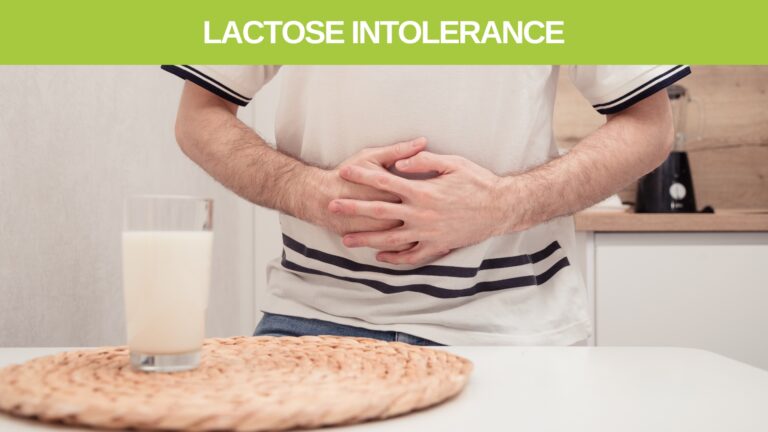
Food Allergies and Leaky Gut Syndrome
What are food allergies?
- Adverse immune-mediated reactions to ingested food proteins or antigens.
- Symptoms range from mild digestive upset to severe anaphylactic reactions.
Role of intestinal barrier dysfunction:
A weakened gut barrier may contribute to both:
- Antigen sensitization (the immune system learning to recognize food proteins as threats).
- The anaphylactic phase of allergic disease.
How food allergies develop:
- Food antigen crosses the intestinal barrier.
- Exposed to the mucosal immune system.
- Triggers production of antigen-specific immune cells.
- Leads to an immune reaction upon future exposures.
Hypothesis:
- Altered intestinal permeability increases the transport of dietary antigens across the gut lining.
- This repeated exposure to immune cells may promote food allergy development. (4)
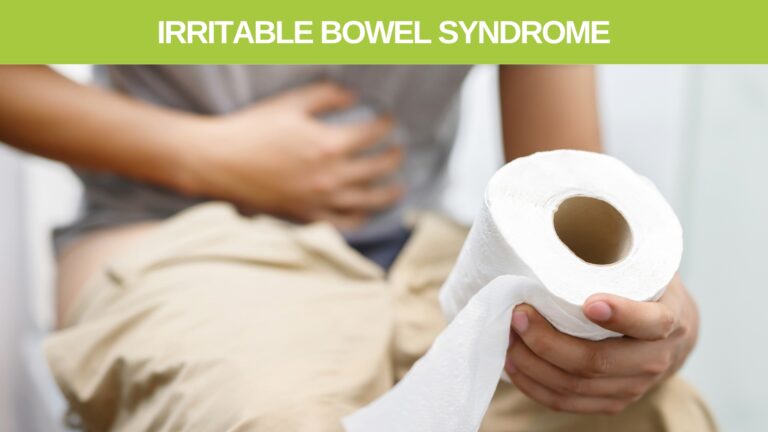
Irritable Bowel Syndrome and Leaky Gut
Types of IBD:
Crohn’s disease and ulcerative colitis.
- Both are chronic, relapsing-remitting inflammatory diseases of the digestive tract.
Emerging model of IBD pathogenesis:
- Breakdown of intestinal barrier function.
- Luminal contents (food antigens, microbes, toxins) come into contact with immune cells in the lamina propria.
- An exaggerated immune response develops.
The role of intestinal permeability:
- A growing body of evidence suggests that increased gut permeability is a primary contributing factor in the development of IBD.
- This means that a “leaky gut” may be at the root of disease onset and progression. (4)
Leaky Gut Syndrome Natural Treatment
It would appear from the research above that leaky gut syndrome is caused by a combination of events. Poor diet, stress along with long-term ingestion and exposure to toxic irritants, pathogens and detrimental microbes all contribute to the onset of a leaky gut.
The restoration of a healthy gut environment will be the most relaible way to encourage the body to heal the damage cuased by the above.
Dietary Approach To Leaky Gut Syndrome
Altering your diet is tghe first line of defense and healing for a leaky gut, and there is a lot that can be done. Here are a few strategies to support a healthy gut.
Limit refined carbs and sugar:
- Harmful bacteria thrive on sugar, weakening the gut barrier. (7, 8, 9)
- Avoid processed foods: bread, pasta, cereals, snack bars, sugary drinks, sweets, pastries, cakes, and muffins.
- Focus on a wholefood diet for best results
Take probiotics:
- Probiotics support gut balance and reduce GI disease symptoms. (10–14)
- Include plain unsweetened yogurt regularly.
- Consider supplements with strains like L. reuteri.
Eat fermented foods:
- Fermented foods provide natural probiotics. (15–17)
- Examples: sauerkraut, kimchi, kefir, kombucha, yogurt.
- Try recipes such as fermented vegetables or yogurt desserts.
Adopt a more alkaline diet:
- Helps reduce acid load on kidneys and supports barrier function. (24)
- Avoid Acid-forming foods: meats, hard cheeses, sugar, nuts.
- Alkaline foods: most fresh fruits and vegetables.

Eat more high-fiber foods
Diet strongly influences the composition and function of gut microbiota.
The benefits of fibre include:
- Fiber and prebiotics support microbial diversity and barrier health. (36)
- Soluble fiber feeds beneficial gut bacteria. (18–20)
- Found in fruits, vegetables, and legumes.
- Prebiotic fiber and microbiota balance
- A raw food diet naturally increases fiber intake.
Read more about raw food here →
Bacterial fermentation of fiber produces:
- Lactic acid.
- Short-chain fatty acids (SCFAs), especially butyrate.
- These reduce colonic pH, fostering a healthier microbial community.
Higher fiber per calorie intake is linked with:
- More Bifidobacterium spp.
- Increased butyrate production (protects the intestinal lining).
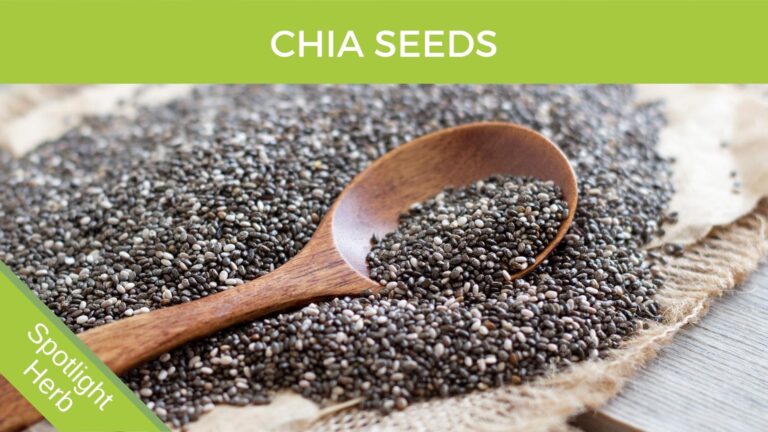
Chia seed contains soluble fiber, which may have improved the time of food digestion and the absorption of nutrients by intestinal cells. The physical and chemical characteristics of soluble fiber may alter the absorption of food nutrients, such as fermentation, bulking and binding ability, viscosity and gel formation, water-holding capacity, and solubility. (37)
Pslyllium Husk also contains soluble fibre and has been shown to reduce inflammatory bowel disease when combined with other probiotics. (38)
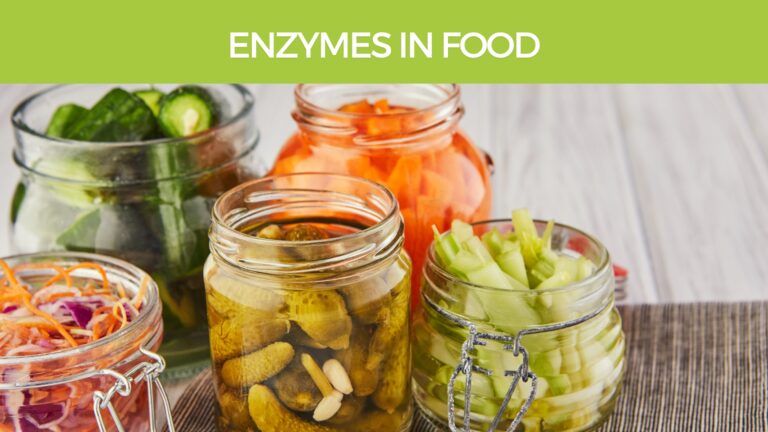
Defensins, Plant Enzymes and Leaky Gut Syndrome
Defensins (antimicrobial peptides)
- Produced in the intestinal lining to protect against harmful bacteria.
- Activated by enzymatic digestion to function properly. (33)
- In Crohn’s disease, defensins may be defective or underproduced, weakening the mucus barrier. (33)
Mucus barrier:
- Provides innate defense, regulates absorption, and prevents pathogen colonization.
- Changes in mucin production and secretion are linked to disease activity in Crohn’s and ulcerative colitis. (32)
Enzymes and mucus turnover:
- Natural enzymes like papain (papaya) and bromelain (pineapple) help regulate mucus thickness. (32)
Enzymes and gluten intolerance:
- Special enzymes (endopeptidases) can break down the toxic 33-mer gluten peptide into harmless fragments.
- Bacterial-derived enzymes can completely degrade gluten toxins, reducing their immune impact. (35)
Herbs for Leaky Gut Syndrome
Golden Seal - Berberine and the Intestinal Barrier
Source of berberine:
- Berberine is the main active constituent in Goldenseal and other medicinal plants.
- Known for its anti-inflammatory and gut-healing properties.
- Effects in IBS-D (Irritable Bowel Syndrome – Diarrhea type):
Berberine protects intestinal epithelial tight junctions by:
- Downregulating abnormal activation of the TNF-α–NF-κB–MLCK pathway.
- Upregulating A20 expression (a protective regulator).
- Helps repair epithelial barrier damage caused by IBS-D. (25)
Effects in colitis:
Animal studies suggest berberine alleviates colitis by:
- Improving intestinal barrier function.
- Promoting anti-inflammatory responses.
- Reducing oxidative stress.
- Inhibiting macrophage infiltration into the colon, which drives inflammation.
These effects may explain its strong anti-colitis activity. (26)
Barrier protection properties:
Earlier research shows berberine:
- Improves barrier strength in cell cultures.
- Protects against TNF-alpha-induced barrier damage.
- Preserves integrity of rat colon mucosa. (27)
Aloe Vera and the Intestinal Barrier
Ancient medicinal use:
Aloe vera is one of the oldest recorded medicinal plants.
Known for a wide range of biological activities, including:
- Anti-inflammatory effects.
- Wound-healing properties.
- Repair of radiation damage.
- Antibacterial, antiviral, antifungal activities.
- Antidiabetic and antineoplastic (anti-cancer) effects.
- Hematopoietic stimulation (supporting blood formation).
- Antioxidant activity. (28)
Clinical trial evidence (Ulcerative Colitis):
A randomized, double-blind, placebo-controlled trial with 44 patients tested oral aloe vera gel (200 mL daily for 4 weeks).
Results among 30 patients receiving aloe vera:
- Clinical remission in 30% (vs. 7% in placebo).
- Clinical improvement in 37% (vs. 7% in placebo).
- Positive response in 47% (vs. 14% in placebo).
Significant reductions in:
- Colitis activity index (P = 0.01).
- Histological scores (P = 0.03).
- Minimal side effects, similar to placebo. (29)
Active compounds in aloe vera gel:
Includes:
- Acetylated mannans, polymannans.
- Anthraquinone C-glycosides, anthrones, anthraquinones (e.g., emodin).
- Lectins.
Study findings suggest the chromone aloesin plays a central role in controlling intestinal inflammation. (30)
Licorice Root For Leaky Gut Syndrome
Commonly used in sweets, licorice is also a populare herbal medicine and is used for adrenal support, gut health and gut barrier protection.
Licorice compounds (like berberine, glycyrrhizin, flavonoids) help strengthen tight junctions and reduce gut permeability.
Shown to protect against inflammation and oxidative stress.
Anti-inflammatory effects:
- Reduces pro-inflammatory cytokines (e.g. NF-κB, COX-2, iNOS).
- Supports a balanced immune response in the gut.
Mucus & mucosal healing:
- Acts as a demulcent (soothes and coats mucous membranes).
- Stimulates mucin production, protecting the gut lining.
- Licorice is often used for gastric and intestinal healing.
Microbiome benefits:
- Supports growth of beneficial bacteria and helps regulate pathogens (e.g. Candida).
- Licorice extracts may enhance probiotic survival.
Slippery Elm Bark For Leaky Gut Syndrome
Another very popular herbal medicine for soothing an inflammed gut and relieving digestive complaints.
Slippery Elm bark in known to improve gut barrier protection.
Contains mucilage, a gel-like substance that coats and soothes the gut lining.
Forms a protective layer that reduces irritation and supports mucosal healing.
Anti-inflammatory effects:
- Helps calm inflammation in the digestive tract.
- May reduce pain and discomfort from conditions linked to intestinal permeability.
Digestive support:
- Stimulates mucus secretion, which protects against excess stomach acid.
- Traditionally used for IBD, ulcers, reflux, and leaky gut.
A Herbal Program for Leaky Guy Syndrome
By combining all of these recomendations into one simple program the Ultimate Herbal Detox program is deisgned to resolve the imbalance of gut microbiome, feed prebiotic fibre, alkalise the diet while simultaneoulsy provding all of the herbs mentioned above.
We also have available High quality Aloe Vera juice for healing the gut wall, and our recommended Probiotic L-Reuteri to restore a healthy gut microbiome.

